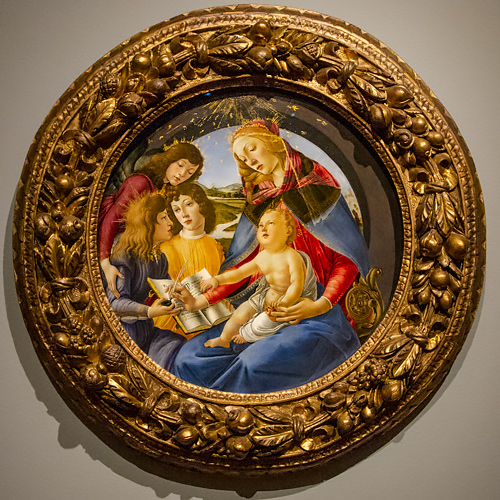Photo Corners headlinesarchivemikepasini.com
![]()
A S C R A P B O O K O F S O L U T I O N S F O R T H E P H O T O G R A P H E R
![]()
Enhancing the enjoyment of taking pictures with news that matters, features that entertain and images that delight. Published frequently.
'Light and Love'




15 August 2018
Recently, we briefly cited the Legion of Honor's exhibit Truth and Beauty: The Pre-Raphaelites and the Old Masters for the half dozen rare images by Julia Margaret Cameron on display. But we thought we'd take a closer look at one of them, Light and Love from 1865.

Light and Love. Julia Margaret Cameron, 1865.
Seeing prints by the British photographer Cameron (1815-1879) is always a special treat. And never more so than in these days of computational photography because she offers an alternate approach to thinking about the captured image.
The curator's note accompanying this print from the J. Paul Getty Museum in Los Angeles covers three images:
Julia Margaret Cameron's three photographs depicting biblical subject matter displayed here demonstrate her recurring exploration of the Virgin Mary as a source for Victorian ideals of femininity. In Light and Love, Cameron has visualized beauty as a factor of maternal love, an ideal similarly expressed by Sandro Botticelli's Madonna of the Magnificat, in this gallery. In Saint Agnes and The Salutation, the figure of Mary served instead to assert a vision of femininity rooted in piety. These works constitute a critical connection between Cameron and old-master painters and demonstrate a commitment to classical subjects shared by her peers in the Pre-Raphaelite Brotherhood.
Cameron, who was born in Calcutta, took up photography when she was given a camera for Christmas at the age of 48 by her daughter after raising five children of her own and six others. She practiced the art for just 11 years before retiring and moving to London.

Madonna of the Magnificat. Sandro Botticelli, ca. 1480-1481.
As we noted in our Saturday Matinee featuring her two years ago, she worked in the wet collodion process, which itself provided plenty of "opportunities to make mistakes." Chemicals had to be mixed and applied to glass before exposure and immediately processed in what was a manual process from start to finish.
Cameron's prints consequently exhibit imperfections like scratches, smudges and fingerprints that, in addition to the soft focus she employed for posed subjects, make her approach to photography particularly unusual in the digital age.
But they would also have been frowned upon in Botticelli's day where the detailed brushwork and vibrant colors contrast strongly with Cameron's hazy monochrome depictions.
Despite her dramatic stagings, Cameron seemed to appreciate that her camera had a cinematic view of the subject, not a theatrical one. She brings you closer than any theater seat could get you and like today's best directors took advantage of the camera's intimacy to heighten the drama rather than the glamor of a scene.
We are brought in very close to this child whose mother hovers watchfully over the peacefully sleeping infant, both their faces in focus. Notice, too, that the scene is set in what appears to be nothing more than a nest.
Compare that to Botticelli's regal scene with a full cast of characters (de' Medici patrons of the painter posed for him), the mother figure inscribing the beginning of the Song of Mary in a book and the infant looking up to her. It's the difference between glory and intimacy, between power and love.
And the difference between what a man in the 1400s knew about politics and a woman 400 years later knew about motherhood.